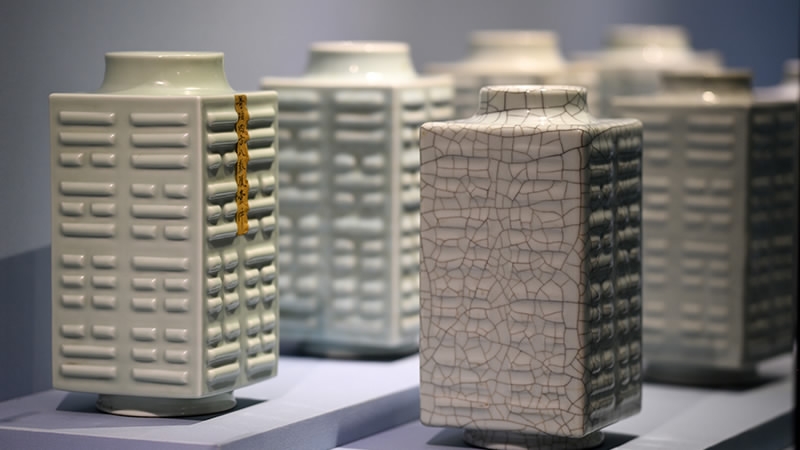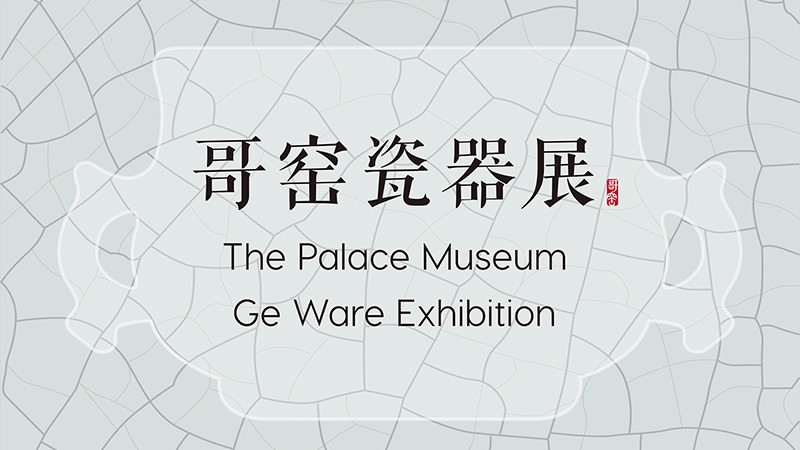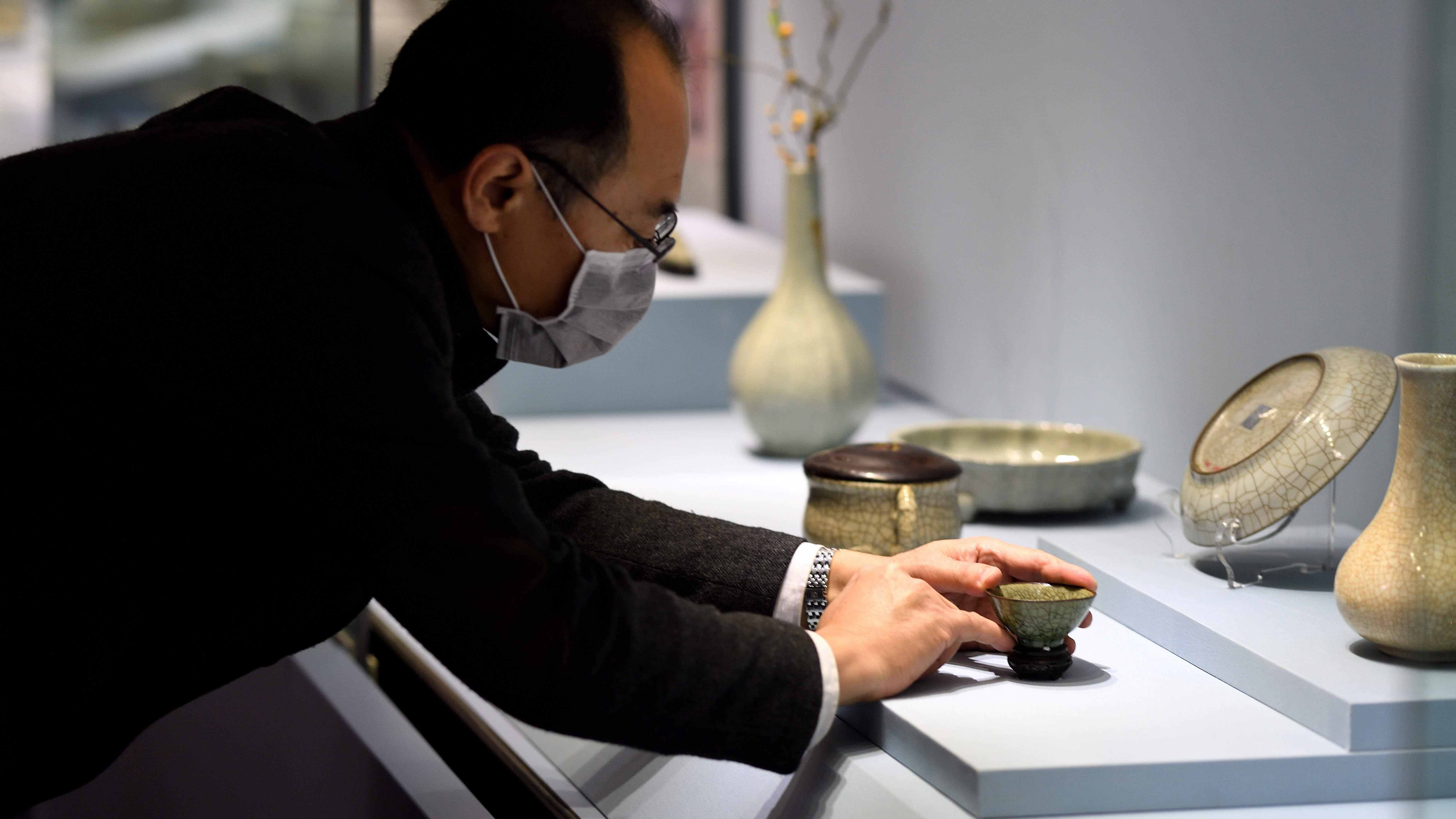
Culture
23:17, 19-Nov-2017
Ancient Ge porcelains on display at the Palace Museum
CGTN

Ge ware artifacts are on exhibition inside the Palace Museum's Palace of Prolonging Happiness, to showcase the glamorous porcelains of the ancient great kiln.
The Palace Museum's collection of 113 authentic and copied Ge porcelains are on display, as well as 57 other artifacts – including ceramics, porcelain chips and repaired antiques – from six other Chinese museums and cultural relic institutions, to give a panorama of the style.

A set of Ge ware artifacts / Palace Museum Photo
A set of Ge ware artifacts / Palace Museum Photo
The exhibition, which runs until late August next year, consists of three units: extant and unearthed Ge porcelains, the unknown location of the kiln and its influence on the porcelains followed.
Known as "gold thread and iron wire," existing Ge ware artifacts generally feature surface cracks varying in size and depth, and are glazed thickly in lustrous colors of bluish-gray, light greenish-blue and cream.

The poster of the exhibition / Palace Museum Photo
The poster of the exhibition / Palace Museum Photo
As for the Ge kiln site, scholars hold varied theories due to the uncertainty of the exact location. Legends recorded in documents from the Ming Dynasty suggest that the kiln is named after the elder brother of the director of the Longquan Kiln.
With its unique artistic charm, Ge porcelain had a profound impact on the porcelains that followed, and was imitated by imperial and local kilns in the Ming and Qing Dynasties. The Jingdezhen Imperial Kiln succeeded in imitating the Ge porcelain in the Xuande period of the Ming Dynasty, and prospered in the Yongzheng and Qianlong periods of the Qing Dynasty.

A staff member displays a Ge ware cup. / Palace Museum Photo
A staff member displays a Ge ware cup. / Palace Museum Photo
In Chinese ceramics history, the Ru Kiln, Guan Kiln, Ge Kiln, Ding Kiln and Jun Kiln are collectively known as the '"Five Great Kilns" in the Song Dynasty (960-1279 AD).
The Palace Museum, possessing one of the largest collections of the "Five Great Kilns," launched a series of relevant special exhibitions in 2010. The Ge ware exhibition is the last in the series.
2km

SITEMAP
Copyright © 2018 CGTN. Beijing ICP prepared NO.16065310-3
Copyright © 2018 CGTN. Beijing ICP prepared NO.16065310-3